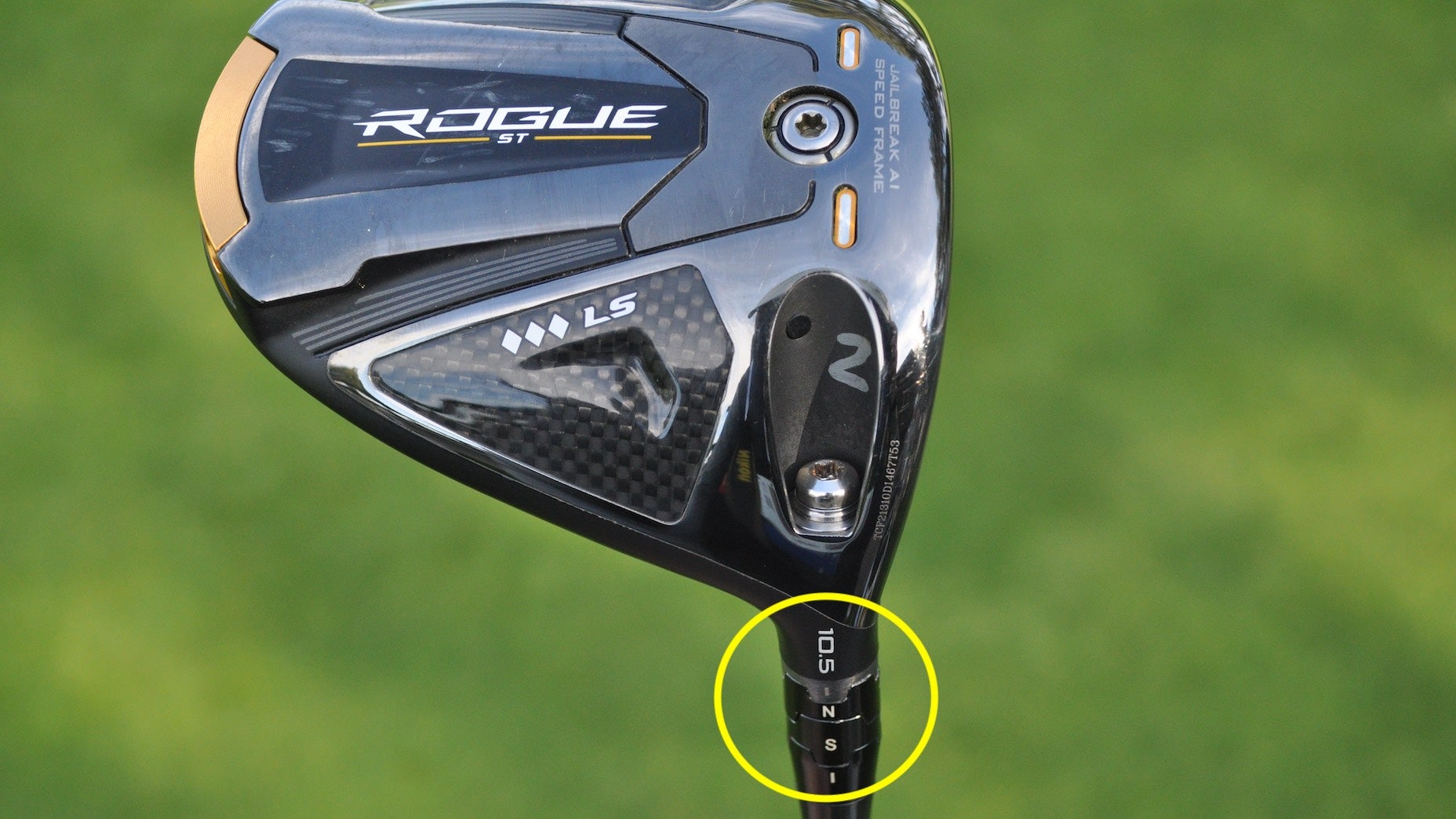
Rahm’s driver setup doesn’t look all that different from what you’d find on the retail shelf.
Jonathan Wall/GOLF
Jon Rahm completely overhauled his equipment setup and didn’t skip a beat when he made the jump from TaylorMade to Callaway at the beginning of 2021. The U.S. Open Championship Trophy resting comfortably inside his Scottsdale, Arizona, residence is all the proof you need.
Working closely with Callaway Tour team and engineers, Rahm has found an equipment setup that’s built to handle pressure-packed situations. During last week’s Farmers Insurance Open, GOLF.com was granted access to take in-hand photos of every club in Rahm’s bag, including a few recent additions.
Below are 7 things that stuck out to me as I inspected his Callaway setup.
Some variables don’t change
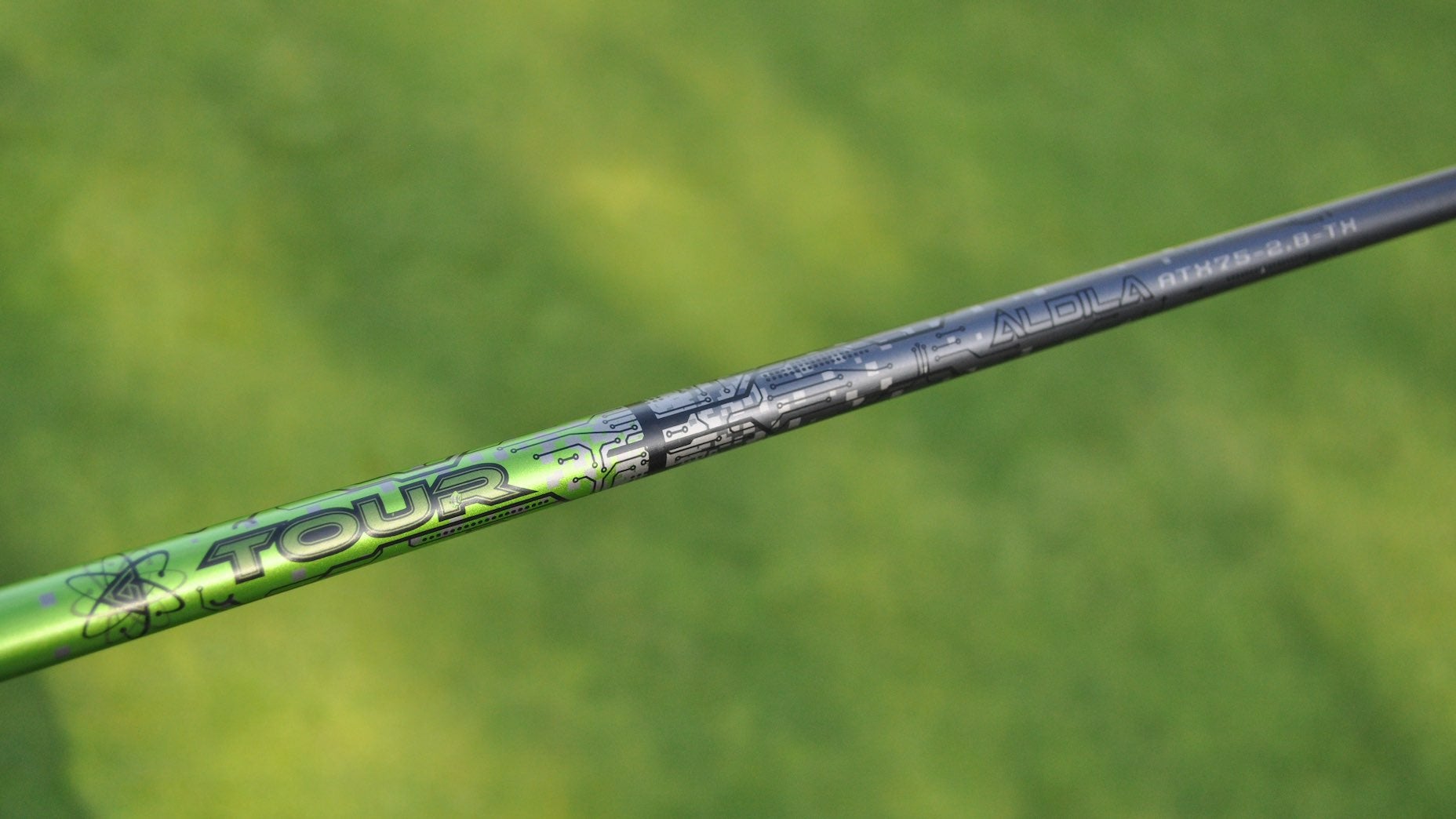
Rahm has been playing Aldila’s Tour Green driver shaft since he turned pro.
Jonathan Wall/GOLF
As much as we preach treating every fitting as a blank slate and leaving biases at the door, having the ability to eliminate variables during the session can make things a lot easier. In Jon Rahm’s case, the driver shaft isn’t changing — along with the irons shafts — when he starts testing new Callaway product.
Knowing you need to find a head that benefits, in Rahm’s case, an Aldila Tour Green 75TX driver shaft can cut down on the search process.
“It definitely makes things easier when we’re doing a driver fitting with Jon,” said Jacob Davidson, Callaway’s PGA Tour Manager. “Your first goal is to eliminate variables. If you have too many variables, it can make things difficult to figure out. For Rahm, he’s not changing that [Aldila] shaft. He knows that shaft and has played great with that shaft. He’s made that clear that he doesn’t want to change.”
When you have a shaft that’s working, make the clubhead adapt to the surroundings. Recreational golfers can learn a thing or two from Rahm on how to treat a reliable shaft during a gear fitting.
Stock setup

Rahm’s driver loft sleeve setting is about as stock as it gets.
Jonathan Wall/GOLF
Rahm’s Callaway Rogue ST Triple Diamond LS driver is set up for high launch and low spin. It’s not uncommon for pros to play a 10.5-degree head and turn the loft down to hit a fade, but Rahm’s more than content playing his driver in the standard loft, neutral face angle setting. The neutral setting allows him to work the ball in both directions.
Adding hot melt inside the head is one way to change launch, flight and spin characteristics without adjusting the loft sleeve, but unless you have a reliable certified club-builder at the ready, the best way to alter any of the above characteristics is via the loft sleeve. In Rahm’s case, he doesn’t see the need to do a ton of tinkering to the driver.
Wiggle room
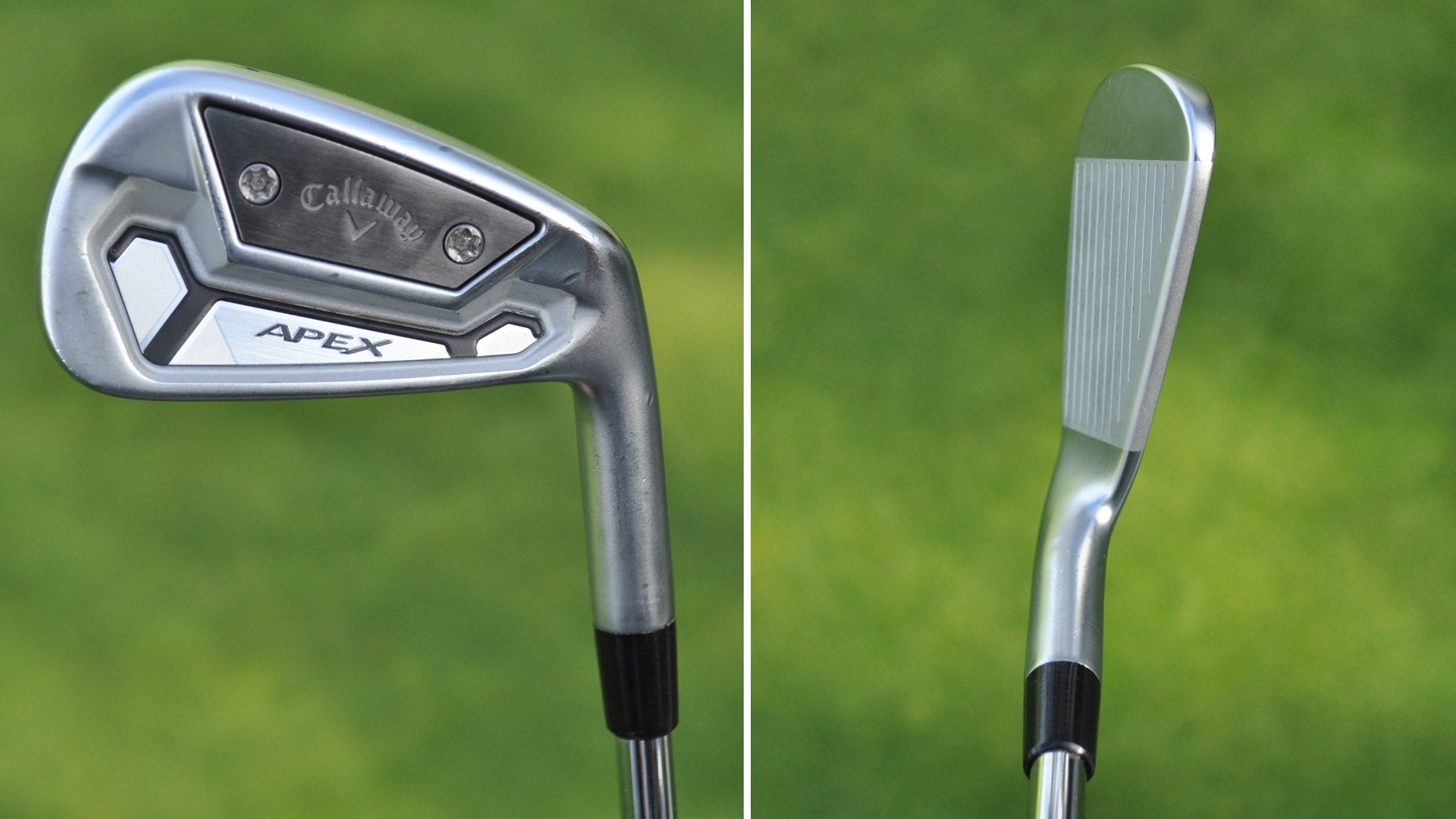
Rahm’s irons offer a good blend of workability and forgiveness.
Jonathan Wall/GOLF
Even one of the best ball-strikers in the world doesn’t hit it out of the dead center every time. Rahm has relied on a cavity-back iron for years and even prefers a touch of offset in the head to help him square it up on mishits. The small cavity on the Callaway Apex TCB also allows him to get away with the occasional miss when the heart starts racing on Sunday afternoon.
If golf’s top-ranked player is happy using a set of cavity-back irons, you have permission to do the same.
Tiger gear
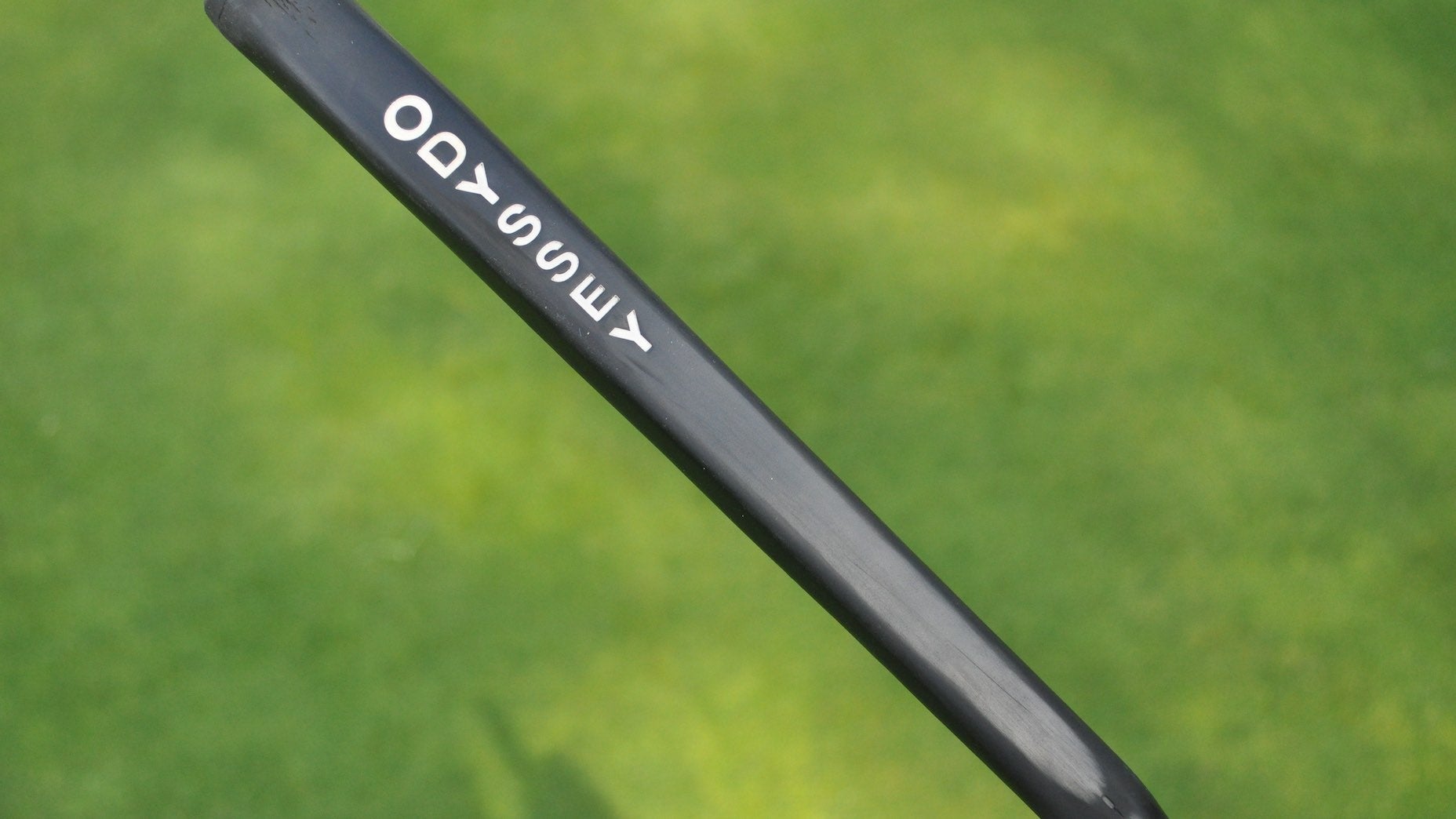
Rahm and Tiger use the same putter grip design.
Jonathan Wall/GOLF
Rahm’s respect for Tiger is well documented. Following his Sunday singles win over the 15-time major winner at the 2018 Ryder Cup, Rahm discussed the magnitude of the moment and the chance to play against one of his idols.
“All year long I was looking forward to the day I was going to play with Tiger Woods, and it didn’t happen until singles at the Ryder Cup,” Rahm said in an interview with GOLF.com. “It wasn’t the best time, because there’s a lot that comes into play with Tiger, right, a lot of memories I have, as he is one the people I grew up idolizing.”
Knowing Rahm’s admiration for Tiger, it seems fitting that he plays a piece of gear that Woods put on the map — a traditional pistol-style rubber putter grip. For Tiger, it’s a Ping PP58 grip. For Rahm, it’s an Odyssey version that bears many of the same hallmarks.
The smaller grip is designed to get the hands more engaged in the stroke, as opposed to a larger version that places more of an emphasis on the larger muscle, thereby reducing wrist movement.
Custom grinds
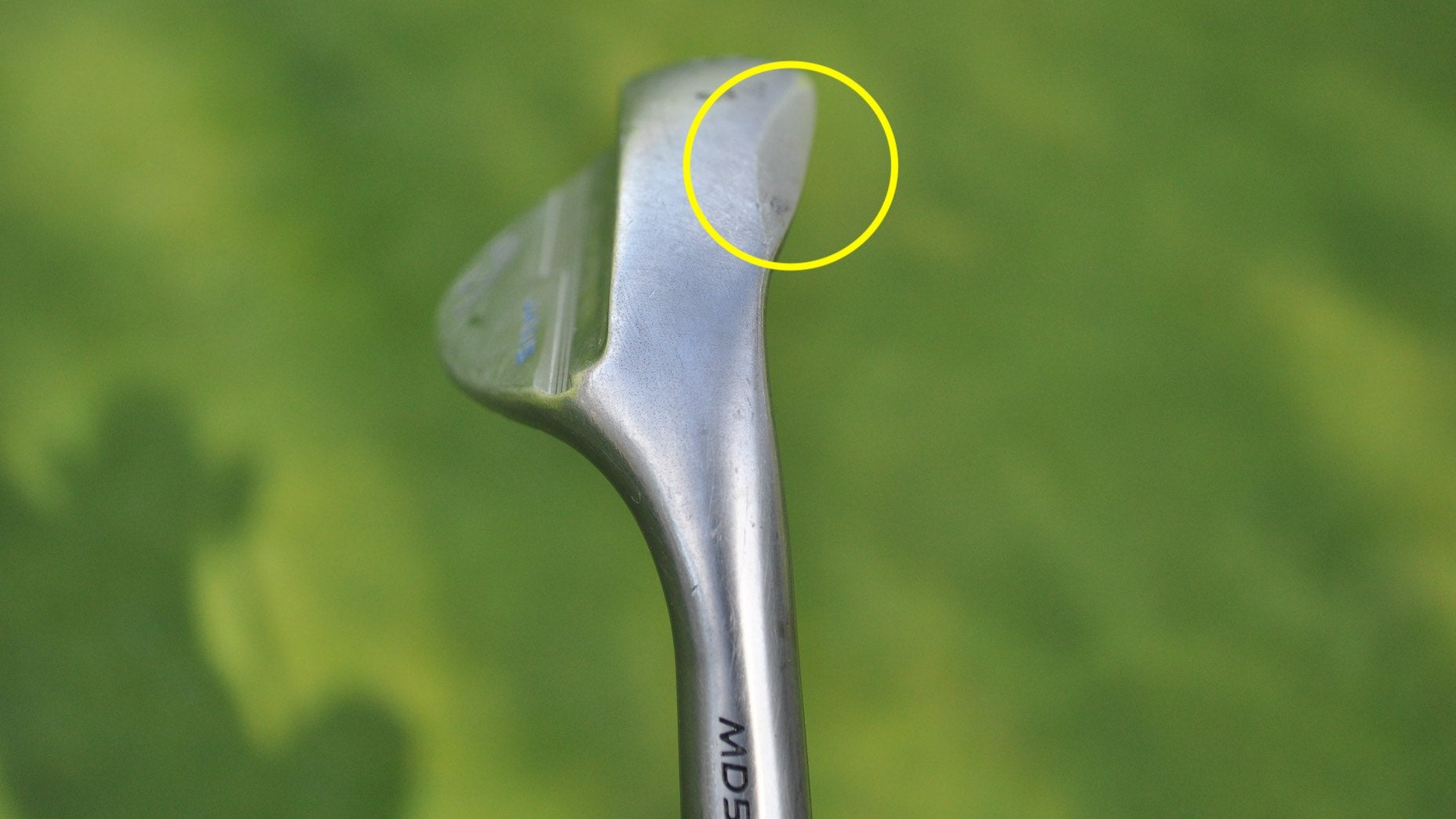
Rahm worked with Roger Cleveland on his new lob wedge.
Jonathan Wall/GOLF
In a video Callaway’s Johnny Wunder posted on Instagram late last year, Jon Rahm nips a low spinner from a precarious lie at the Ely Callaway Performance Center that checks hard and backtracks towards the hole. The wedge used to execute the shot is the one in the above photo. Master wedge craftsman Roger Cleveland is the mastermind behind this custom 60-degree Callaway Jaws wedge.
Rahm is surgical around the greens, but even the best wedge players in the world can use a bit of leading edge relief, especially on squared-up shots. Removing material from the sole allows the leading edge to impact the turf efficiently without digging. In other words, it keeps Rahm from chunking it on tight lies.
Free it up

Rahm’s White Hot OG Rossie S is free of alignment aids.
Jonathan Wall/GOLF
Years ago, I noticed Jason Day had gone away from a putter with an alignment line on the head. It got me wondering why a pro would opt for a “naked” putter free of lines or dots to help zero-in on his target after years of success with a line.
“I couldn’t quite see the line anymore,” Day said. “Normally when I’m over the putt I can see the line from the ball to the hole. Well, I couldn’t see it rolling and tracking, and that’s how I’ve always read putts.”
Rahm lives by the same KISS (Keep It Simple Stupid) principle with his Odyssey White Hot OG Rossie S mallet. Instead of fixating on multiple alignment aids to find the perfect line to the hole, Rahm relies on his otherworldly feel to match up line and speed. It’s very Seve-esque.
Custom gear
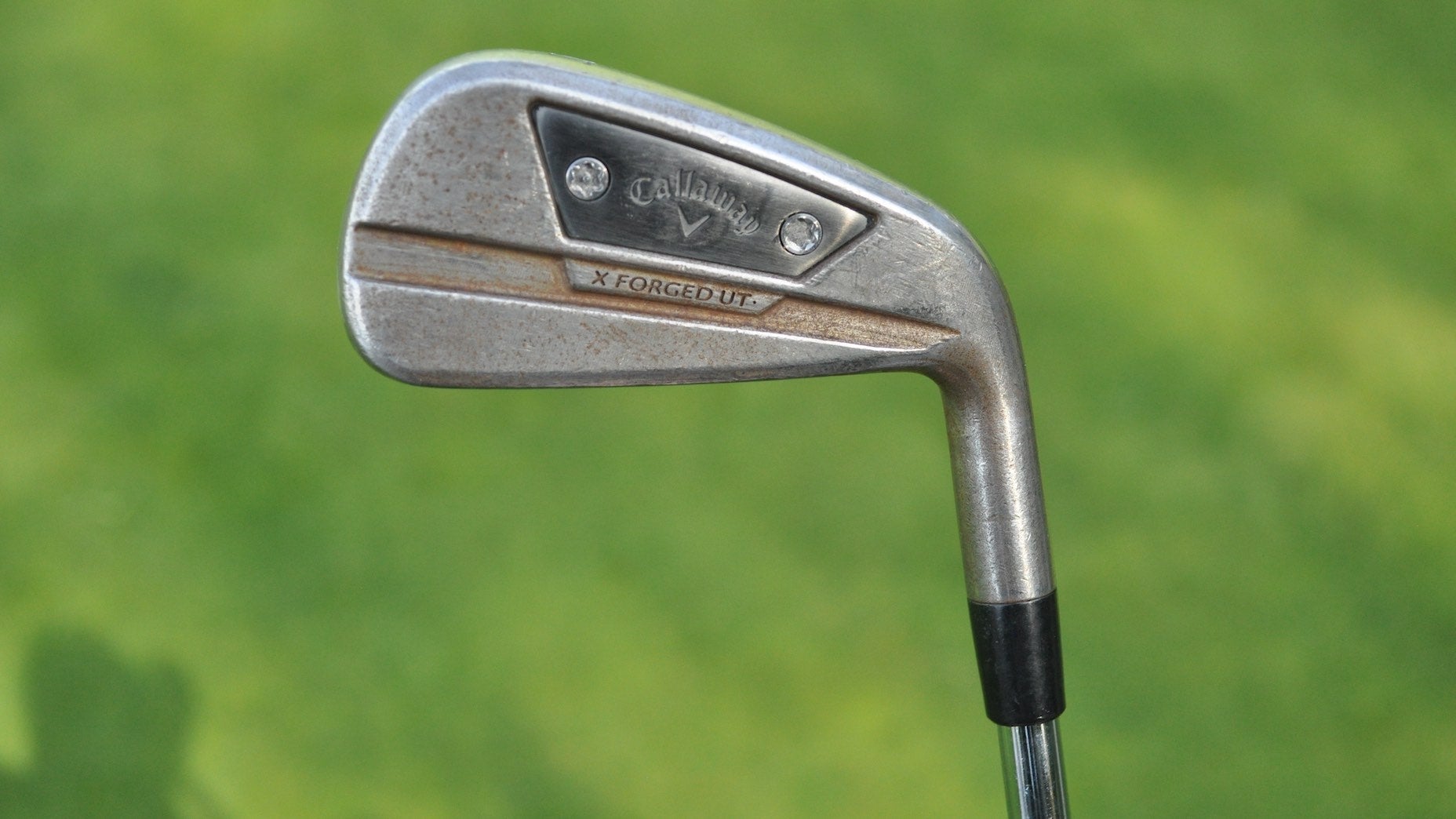
Rahm’s Callaway X Forged UT utility is a custom creation.
Jonathan Wall/GOLF
As you’d expect, Rahm carries some clubs that you wouldn’t be able to find at your local golf shop — at least not in their current form. For example, Rahm’s 22-degree Callaway X Forged UT is a retail option, but the overall cavity design and plating differs from what you’d find in the Spaniard’s bag. And there’s nothing wrong with that.
When you’re a golf rockstar, custom gear is an option. In Rahm’s case, his version has more of a blade-like profile and happens to be made from raw carbon steel. Hence, the rusting and patina you see on the head. Rahm’s version is just as reliable as the retail head, but sometimes pros want a certain look and feel that simply isn’t part of the retail offerings. This is where it’s good to have a tour card in your back pocket.









